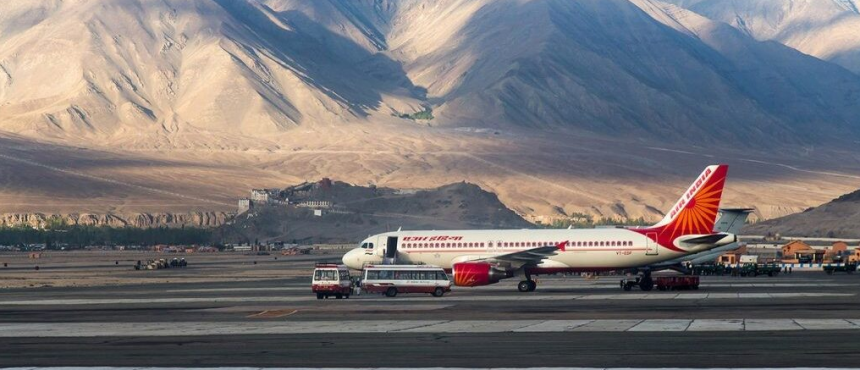AVIATION & INFRASTRUCTURE
Leh Airport, officially known as Kushok Bakula Rimpochee Airport, is on the cusp of a remarkable transformation. While the airport remains fully functional, it is simultaneously undergoing a massive infrastructure upgrade that is set to redefine air connectivity to Ladakh. The highlight of this project is the construction of a new, state-of-the-art terminal building, scheduled to be inaugurated in October 2025.
Despite the construction activity, Leh Airport continues to operate seamlessly, handling commercial flights and ensuring uninterrupted connectivity for passengers traveling to and from the Union Territory of Ladakh. This continuity underlines the efficiency of project execution, as essential operations remain unaffected.
The upcoming terminal is designed not just as an infrastructural upgrade but as a futuristic model for sustainable aviation in India. With 20 check-in counters, centralized heating and cooling systems, and a passenger handling capacity of 1,000 in both arrivals and departures, the new facility will be equipped to cater to the growing number of visitors to Ladakh—both domestic and international.
In a pioneering move, Leh Airport’s new terminal will be among the first in India to run on a hybrid of geothermal and solar power. This dual-energy approach ensures reduced carbon emissions, energy efficiency, and a significant step towards India’s vision of green aviation infrastructure.
Beyond functionality, the architectural design of the terminal embraces the rich cultural heritage of Ladakh. Traditional motifs, local art, and Ladakhi design elements have been carefully integrated to give passengers an authentic sense of place, ensuring the airport reflects not just modernity but also Ladakh’s unique identity.
The airport’s development plan also includes an additional bay extension, which will be carried out once the old terminal building is dismantled. This expansion will further boost the airport’s operational efficiency and capacity in the coming years.
However, connectivity remains a pressing concern. In earlier years, when Go First operated, there were daily flights from Leh to Srinagar and Leh to Jammu. Today, connectivity has reduced drastically, with only two flights per week to Srinagar. This limitation creates major difficulties for locals, tourists, and officials alike. It is strongly requested that airlines operate at least two daily flights to Srinagar and Jammu from Leh to restore vital connectivity.
At the same time, there are critical infrastructure issues that need urgent attention for the airport’s future. It is very important to vacate the Army-occupied land adjacent to Leh Airport to allow smooth execution of the expansion programme. Equally important is the creation of a night-landing facility, as the Army already operates flights during the night. The need for a dedicated parking bay must also be given top priority to ease congestion and streamline flight operations.
Another pressing concern is the requirement of an alternative airport runway for jet fighter operations near Leh. Currently, after 3:00 pm, fighter jets occupy slots at the airport, restricting civil operations. Expanding the operating hours up to 10:30 pm in the evening would significantly improve civilian air connectivity and maximize the utility of the airport.
The transformation of Kushok Bakula Rimpochee Airport comes at a time when Ladakh is witnessing rising tourism, increased strategic importance, and growing aspirations for connectivity. Once completed, the new terminal will not only ease travel for thousands of passengers but also stand as a national benchmark for eco-friendly aviation infrastructure.
As the October 2025 deadline draws closer, Leh Airport’s journey from a functional airstrip in the Himalayas to a green aviation hub is being watched with great anticipation.
(Author is a Freelance Journalist & Commentator on Ladakh’s Administrative and Developmental Issues. Email: [email protected])








